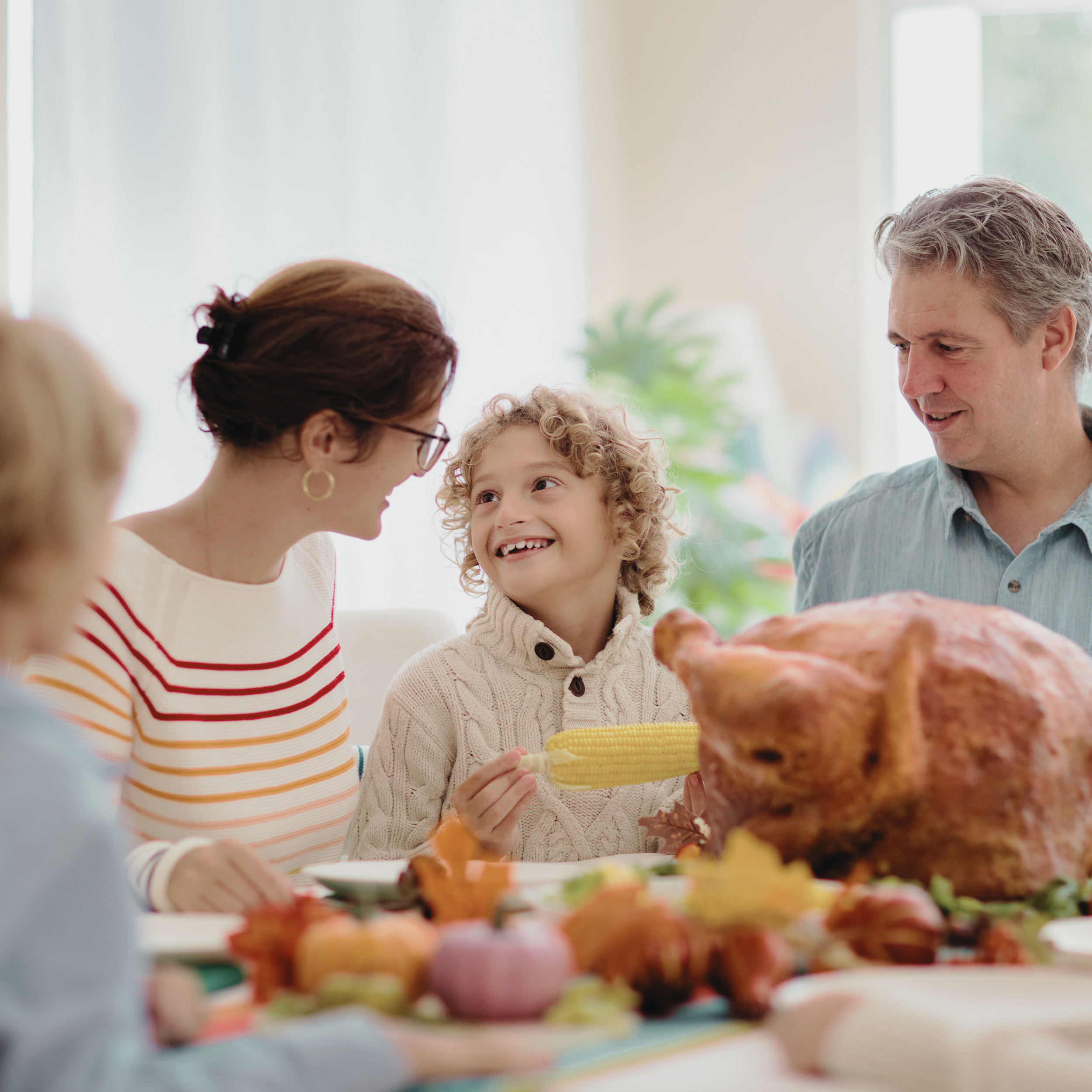Thanksgiving Tips for Sensory Processing Disorder
By Jessica Jordan, MS. OTR/L
How to Help a Loved One with SPD at Thanksgiving
As so many of you know, Sensory Processing Disorder (SPD) is a condition that affects how the brain processes incoming sensory stimuli. That includes the things we see, hear, touch, taste, and even the physical environment—like how much space there is in a room.
SPD can impact just one sense—or many at the same time. During Thanksgiving, individuals with sensory processing challenges may struggle with many of the usual parts of the holiday. But we have a few simple, supportive tips that can help.
What Might Be Difficult for Someone With SPD?
Here are a few things that many individuals with SPD might find especially challenging during Thanksgiving:
Noise
Thanksgiving usually means lots of people gathering in one space—so it also usually means lots of layered sound.
It can be hard to carry on a conversation with Aunt Sue when your cousins are yelling and laughing in the next room while playing video games, music is playing in the background, your dad is watching football on the TV with Uncle Pat, and Grandma is yelling for someone to get her another stick of butter from the fridge.
For individuals with SPD, that kind of competing input can quickly lead to overwhelm.
Smells
While the aromas of Thanksgiving might be enjoyable for some, they can be overpowering or even distressing for individuals with SPD.
Certain smells can bring up strong reactions—because scent is closely tied to the parts of the brain that store memory and emotion. And it’s not just about the food! Think about perfume from guests, candles burning in the living room, heavily scented hand soaps, or the frequent use of hand sanitizer.
Textures
Food aversions can happen anywhere—but they’re almost guaranteed to show up during Thanksgiving for individuals with SPD.
From the ultra-whipped smoothness of mashed potatoes to the slippery feel of cranberry sauce, textures can play a huge role in sensory overwhelm. And even familiar foods might feel too mushy, too different, or just too much in a holiday setting.
How You Can Help
These simple strategies can be supportive in any setting—whether you’re hosting or visiting.
Take Sensory Breaks
Encourage your loved one to take a break from the sensory input when needed. That might mean going outside for some fresh air, stepping into a quiet room, or finding a calm corner of the house.
If you’re hosting, you might even create a “sensory den” where your loved one can go to regulate.
Set Boundaries
Plan ahead to help prevent overwhelm. That could look like arriving early to have time to adjust to the environment—or leaving a little early to avoid sensory fatigue. You don’t have to stay the whole time for the visit to be meaningful.
Taking the pressure off can make the day feel lighter for everyone.
Bring Comfort Items
Think ahead about what helps your loved one feel calm, safe, and regulated. That might include a bean bag chair, noise-canceling headphones, fidgets, comfortable clothing, or a favorite hoodie or blanket.
Familiar items can be powerful tools in unfamiliar environments.
Validate and Support Their Feelings
If your loved one communicates that they’re feeling off or out of sorts, try to stay calm and supportive. You can offer consistent, firm pressure on their hands or shoulders, model deep breathing, or simply stay nearby as a grounding presence.
Sometimes the most helpful thing is just to be there and understand.
Prepare in Advance
Sometimes your loved one might be a sensory seeker—bumping into people or getting too close to others. In that case, offering proprioceptive and vestibular input before the outing can help regulate their system. (You can find ideas for this in past blog posts!)
If your loved one is more of an avoider, focus on protecting their space and offering creative, structured activities that feel safe and manageable.
You Are Not Alone
Whether you or your loved one experiences sensory challenges every day—or feels it more during holidays—you’re not alone.
The goal isn’t to get through Thanksgiving perfectly. The goal is to feel connected and supported, and to create a celebration that works for your family.
We hope these tips will help you and your family be able to cope with the difficulties or changes that may arise during Thanksgiving in order to ensure a pleasant experience for all individuals!
Helpful Links
If you found this post helpful, you’ll love our therapy resources! Whether you’re a parent or therapist, our apraxia and autism courses are here to offer practical tools, compassionate guidance, and real-world strategies you can use every day.
👨👩👧👦 For Parents & Caregivers: Autism Training | Online Course for Parents and Caregivers
🧑🏫 For Therapists: Therapist Course for Apraxia and Autism | Mentorship for OTs and Therapists
🏥 Work With Us: In-Person Occupational Therapy (San Diego & Long Beach Areas) | Virtual Coaching





